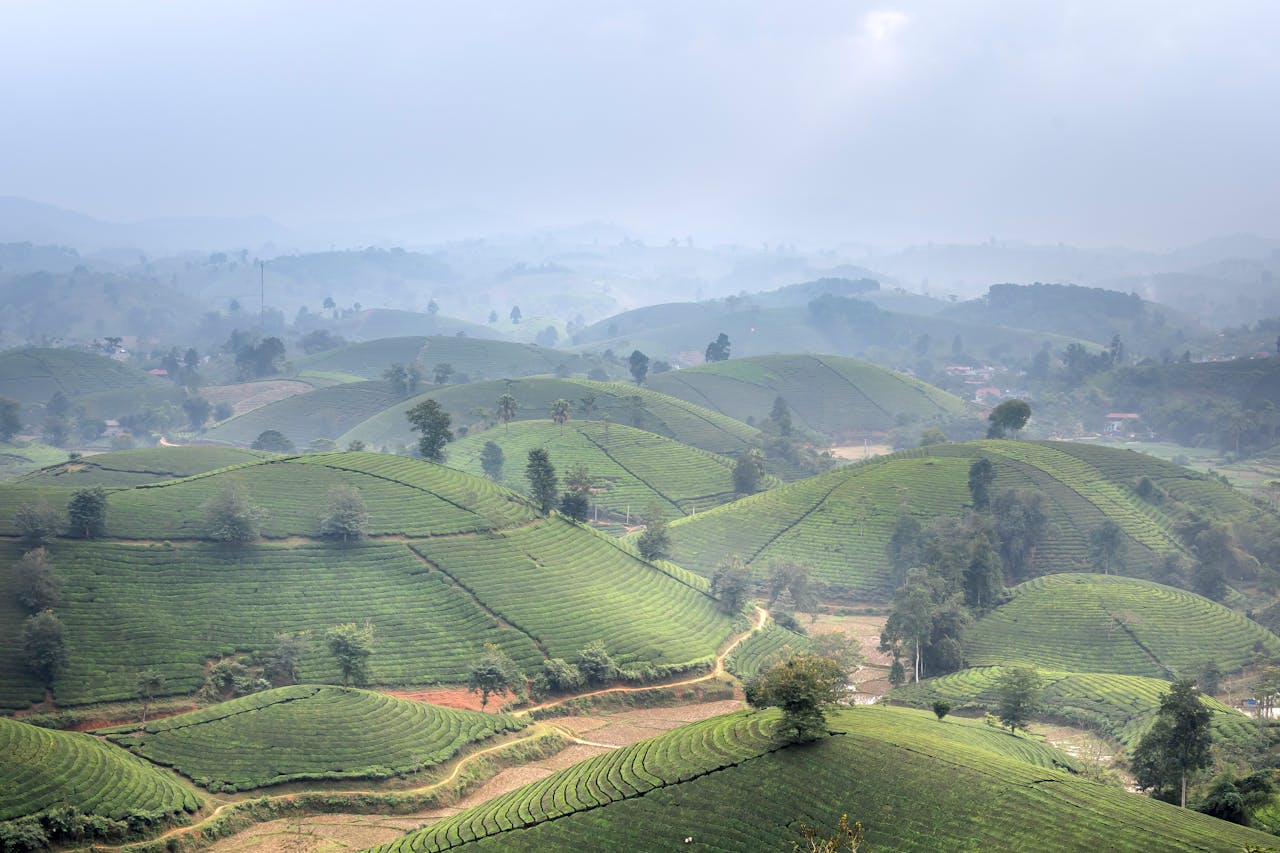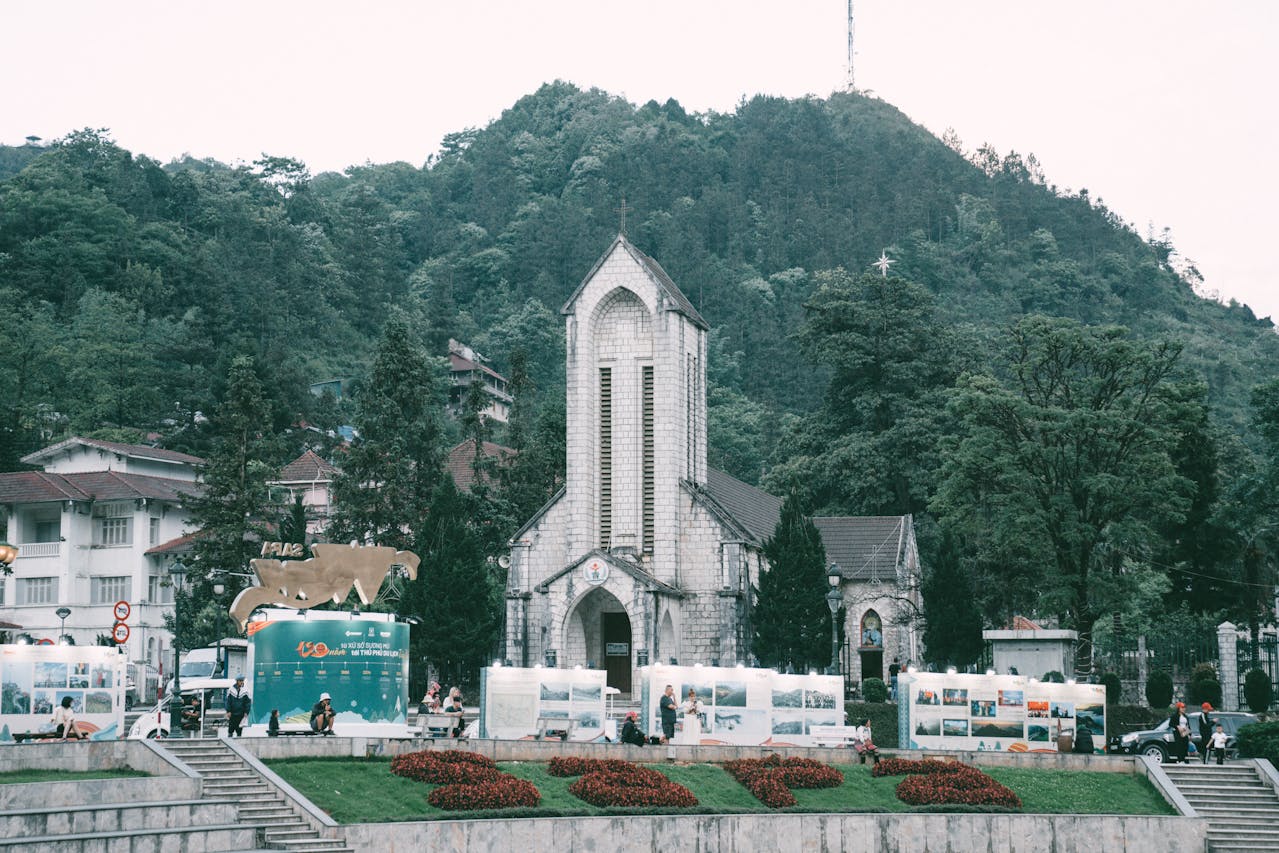Nestled in the dramatic mountains of northern Vietnam, Sapa emerges as a picturesque escape, captivating travelers with its ethereal landscapes, vibrant hill tribes, and cultural diversity.
From terraced rice fields to mist-shrouded peaks, Sapa offers a unique and immersive experience that beckons those seeking an authentic journey off the beaten path.
In this comprehensive guide, we’ll explore the allure of Sapa, delving into its natural wonders, cultural treasures, and the enchanting blend of tradition and modernity.
Natural Splendors: The Terraced Rice Fields
Sapa’s defining feature is undoubtedly its mesmerizing terraced rice fields that cascade down the slopes like emerald-green staircases. These intricate landscapes, carved into the hills by generations of local farmers, create a visual masterpiece. The best times to witness the beauty of the terraced fields are during the planting and harvesting seasons when they come alive with the vibrant hues of green and gold, offering a captivating glimpse into the agrarian way of life in the region.
Trekking Adventures: Conquering Fansipan Peak
Known as the “Roof of Indochina,” Fansipan is the highest peak in Vietnam and a coveted destination for trekking enthusiasts. The journey to the summit involves traversing lush forests, navigating rugged terrain, and camping beneath star-studded skies. The sense of accomplishment upon reaching the summit, standing at 3,147 meters above sea level, is unparalleled. Fansipan not only offers a physical challenge but also rewards trekkers with breathtaking panoramic views of the surrounding landscapes.
Hill Tribe Encounters: Meeting the Locals
Sapa is home to various ethnic minority groups, including the Hmong, Red Dao, and Tay communities. These hill tribes contribute to the cultural mosaic of the region, each with its distinctive traditions, attire, and dialects. A visit to Sapa provides the opportunity to engage with these communities, learn about their way of life, and even participate in local activities. Homestays with hill tribe families offer an immersive experience, allowing travelers to connect with the rich cultural heritage of Sapa.
Markets and Handicrafts: Exploring Local Culture
Sapa’s vibrant markets are hubs of activity, showcasing the region’s unique blend of traditional crafts and ethnic diversity. The Bac Ha Market, held on Sundays, is a colorful spectacle where hill tribes gather to trade goods, textiles, and handicrafts. Visitors can peruse intricately embroidered textiles, handmade jewelry, and traditional clothing, providing an opportunity to support local artisans and take home a piece of Sapa’s cultural richness.

Climate and Seasons: Sapa’s Ever-Changing Beauty
Sapa’s high-altitude location contributes to a climate that experiences distinct seasons. Summers are cool and refreshing, making it an ideal escape from the heat of lower elevations. Autumn brings clear skies and crisp air, enhancing the visibility of the stunning landscapes. Winter can be chilly, with occasional snowfall adding a magical touch to the scenery. Each season in Sapa unfolds a different facet of its beauty, offering a year-round destination for those seeking diverse natural experiences.
Sustainable Tourism: Balancing Preservation and Exploration
Sapa’s popularity among travelers has brought both opportunities and challenges. Efforts are underway to promote sustainable tourism practices that respect the local environment and cultures. Responsible trekking, supporting local initiatives, and choosing eco-friendly accommodations contribute to preserving the integrity of Sapa’s landscapes and ensuring that future generations can continue to appreciate the region’s natural and cultural wonders.
Culinary Delights: Sampling Local Flavors
Sapa’s culinary scene reflects the diverse influences of its multicultural communities. Local markets and eateries offer a chance to savor traditional dishes of Vietnam, including hearty stews, grilled meats, and flavorful rice dishes. Exploring Sapa’s food culture provides not only a gastronomic journey but also an insight into the agricultural practices that sustain the region. Don’t miss the opportunity to try local specialties and indulge in the simple yet delicious flavors of Sapa.
Access and Accommodations: Planning Your Visit
Reaching Sapa involves a scenic journey by train or bus from Hanoi. The overnight train journey is a popular choice, offering comfortable sleeper cabins and stunning views of the countryside. Accommodations in Sapa range from homestays with hill tribes to boutique hotels with panoramic vistas. The town itself is compact, making it easy to explore on foot, and the surrounding landscapes are best navigated with the assistance of local guides.
Conclusion: Sapa’s Timeless Allure
Sapa, with its timeless landscapes and cultural richness, stands as a testament to the beauty of Vietnam’s northern highlands. From the verdant terraced fields to encounters with vibrant hill tribes, every aspect of Sapa offers a glimpse into the region’s unique identity. A journey to Sapa is a journey into the heart of Vietnam’s captivating soul.
Featured Image: The Church in Sapa, Vietnam | Photo by Quyển Phạm Xuân
Read more Vietnam travel articles.

